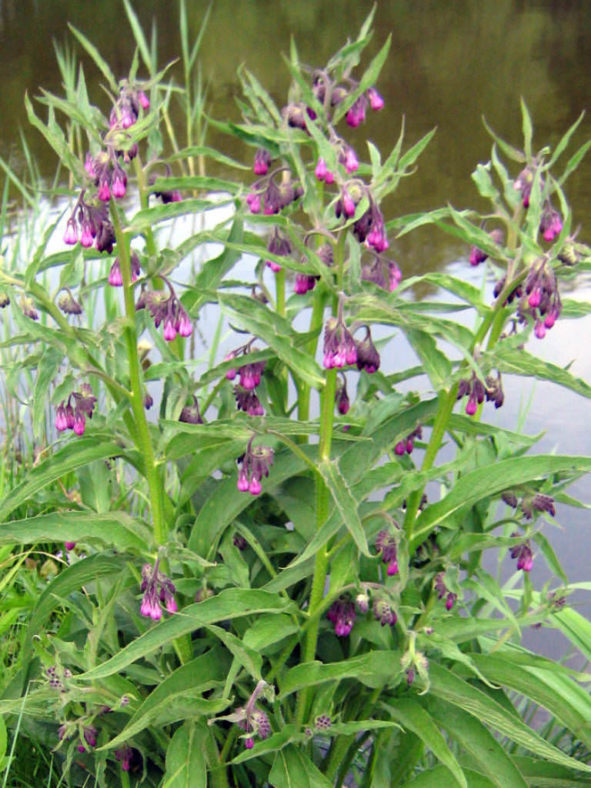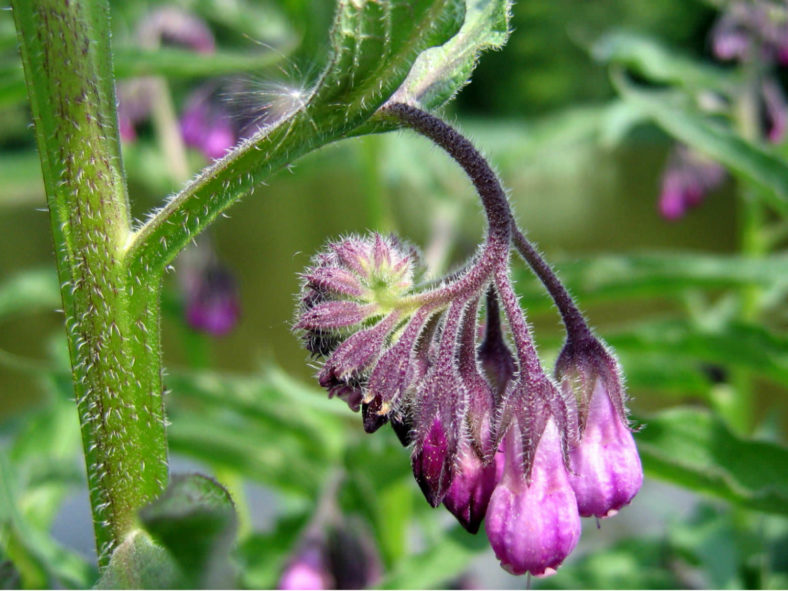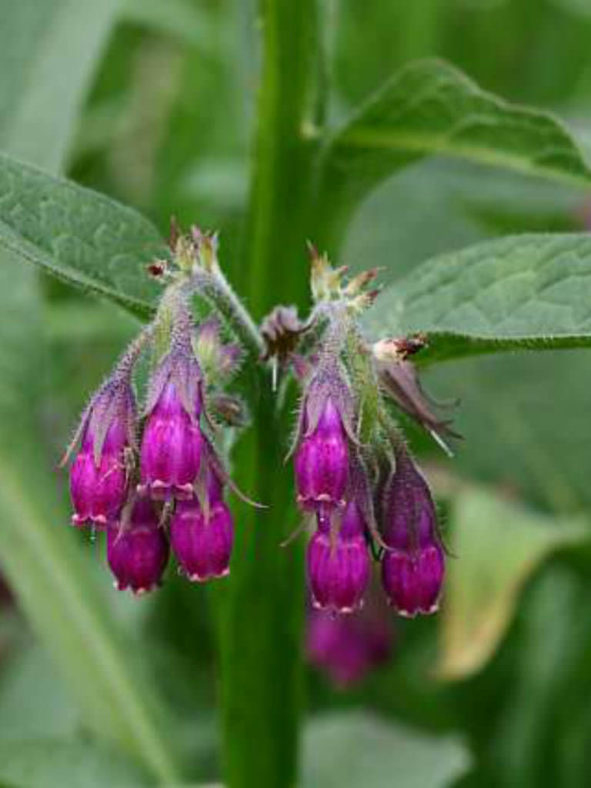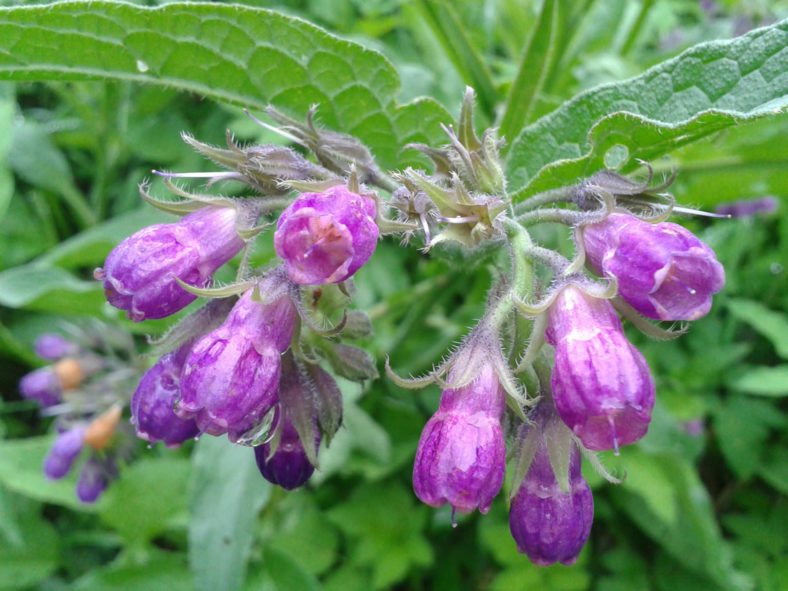Scientific Name
Symphytum officinale L.
Common Name(s)
Comfrey, Common Comfrey, True Comfrey, Quaker Comfrey, Cultivated Comfrey, Boneset, Consound, Healingherb, Knitbone, Slippery-Root
Synonym(s)
Symphytum peregrinum
Scientific Classification
Family: Boraginaceae
Subfamily: Boraginoideae
Genus: Symphytum
Flower
Color: Yellow
Bloom Time: Mid-spring to early summer
Description
Symphytum officinale is a hardy perennial plant with thick, hairy stems that bear large, ovate to lanceolate, dark green leaves. It grows up to 4 feet (1.3 m) tall. The roots are fleshy, white on the inside, and black on the outside.
The flowers are small and bell-shaped, arranged in dense clusters, and vary in color from white and creamy-white to light purple and pink.
How to Grow and Care
Comfrey can be grown from seed, but it requires a winter chilling period to germinate. If all you want is one plant, you can usually find them for a reasonable price in the herb section of local nurseries or by mail order. Plants can go outdoors once the danger of frost has passed.
It is more common to use root cuttings when starting several plants. These are 2 to 6 inches (5 to 15 cm) long root pieces planted horizontally and 2 to 8 inches (5 to 20 cm) deep. Plant shallow in clay soil and deeper in sandy soils.
You can also grow Comfrey from crown cuttings, which will be more expensive. A crown cutting will include several eyes and grow faster than root cuttings. However, the difference is negligible. Crown cuttings are planted 3 to 6 inches (7.5 to 15 cm) deep.
Comfrey is widely adapted, but it will thrive in rich organic soil.
See more at How to Grow and Care for Comfrey.
Origin
Symphytum officinale is native to Europe.
Links
- Back to genus Symphytum
- Plantpedia: Browse flowering plants by Scientific Name, Common Name, Genus, Family, USDA Hardiness Zone, or Origin
Photo Gallery
Click on a photo to see a larger version.





